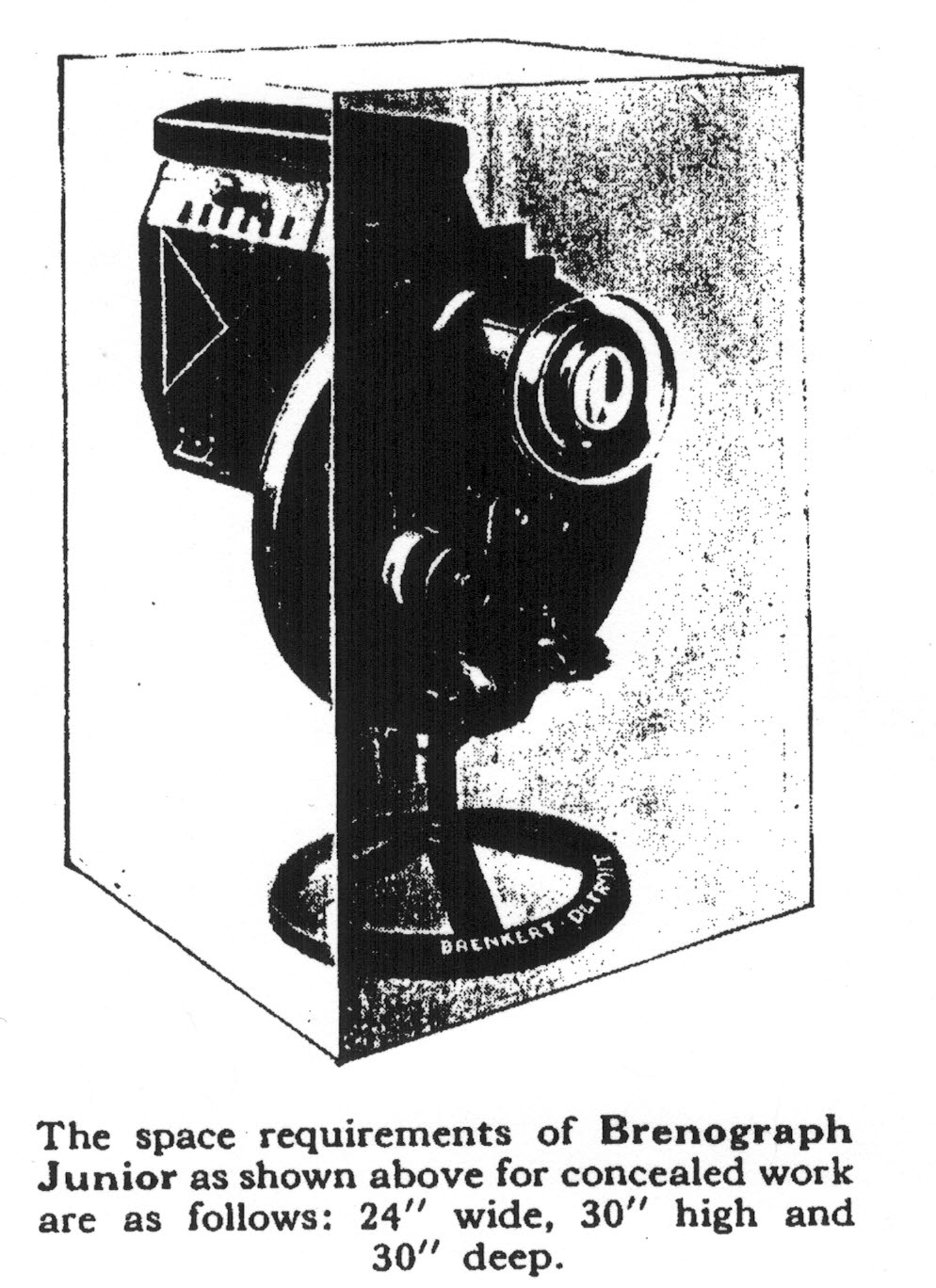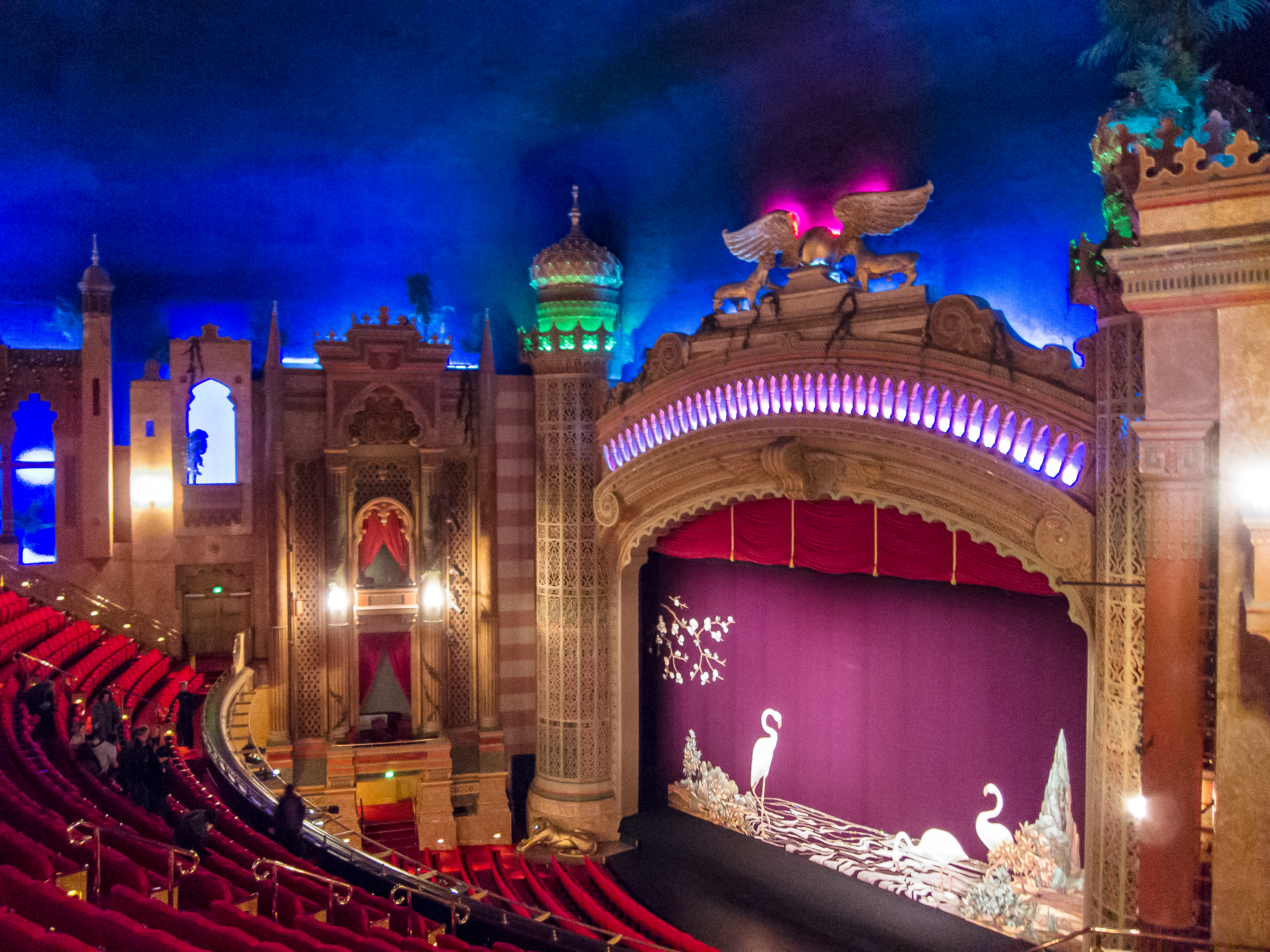|
Brenkert Brenograph Jr.
The Brenkert Brenograph Jr. was a projector used in atmospheric theatres to project moving clouds over ceilings painted blue. The effect created the illusion that theatre patrons were outdoors. The device was used primarily in theatre designs of John Eberson. The machine was manufactured by the Brenkert Light Projection Company of Detroit. The company sold the projector for $225 in the 1920s. The projector operated automatically with a universal electrical motor, capable of varying speeds. It used a powerful 1500 watt light bulb to display nimbus and cumulus cloud Cumulus clouds are clouds which have flat bases and are often described as "puffy", "cotton-like" or "fluffy" in appearance. Their name derives from the Latin ''cumulo-'', meaning ''heap'' or ''pile''. Cumulus clouds are low-level clouds, gener ...s. The clouds were images on a strip of negatives that moved continuously in front of the light. The negatives were affixed to a circular disc that rotated once every 10 ... [...More Info...] [...Related Items...] OR: [Wikipedia] [Google] [Baidu] |
Projector
A projector or image projector is an optical device that projects an image (or moving images) onto a surface, commonly a projection screen. Most projectors create an image by shining a light through a small transparent lens, but some newer types of projectors can project the image directly, by using lasers. A virtual retinal display, or retinal projector, is a projector that projects an image directly on the retina instead of using an external projection screen. The most common type of projector used today is called a video projector. Video projectors are digital replacements for earlier types of projectors such as slide projectors and overhead projectors. These earlier types of projectors were mostly replaced with digital video projectors throughout the 1990s and early 2000s, but old analog projectors are still used at some places. The newest types of projectors are handheld projectors that use lasers or LEDs to project images. Movie theaters used a type of projector cal ... [...More Info...] [...Related Items...] OR: [Wikipedia] [Google] [Baidu] |
Atmospheric Theater
An atmospheric theatre is a type of movie palace design which was popular in the late 1920s. Atmospheric theatres were designed and decorated to evoke the feeling of a particular time and place for patrons, through the use of projectors, architectural elements and ornamentation that evoked a sense of being outdoors. This was intended to make the patron a more active participant in the setting. The most successful promoter of the style was John Eberson. He credited the Hoblitzelle Majestic Theatre (Houston, 1923) as the first. Before the end of the 1920s he designed around 100 atmospheric theatres in the U.S. and a few other countries, personally selecting the furnishings and art objects. His most notable surviving theatres in the United States include the Tampa Theatre (1926), Palace Theatre (1928), Majestic Theatre (1929), Paramount Theatre (1929), and the Loew's Theatre (1929). Remaining international examples include The Civic Theatre (1929, Auckland, New Zealand), The Fo ... [...More Info...] [...Related Items...] OR: [Wikipedia] [Google] [Baidu] |
John Eberson
John Adolph Emil Eberson (January 2, 1875 – March 5, 1954) was an Austrian-American architect best known for the development and promotion of movie palace designs in the atmospheric theatre style. He designed over 500 theatres in his lifetime, earning the nickname "Opera House John". His most notable surviving theatres in the United States include the Tampa Theatre (1926), Palace Theatre (1928), Majestic Theatre (1929), Akron Civic Theatre (1929) and Paramount Theatre (1929). Remaining international examples in the atmospheric style include both the Capitol Theatre (1928) and State Theatre (1929) in Sydney, Australia, The Forum (1929, Melbourne, Australia) and Le Grand Rex (1932, Paris, France). Life and career John Adolf Emil Eberson was born in Czernowitz, Bukovina, Austria-Hungary, now south western Ukraine, on January 2, 1875. He was the son of Sigfried and Lora (Schmidt) Eberson. He attended high school in Dresden, Saxony and studied electrical engineering at the Unive ... [...More Info...] [...Related Items...] OR: [Wikipedia] [Google] [Baidu] |
Brenkert Jr , projector
{{Disambiguation ...
Brenkert may refer to: * Wayne Brenkert (1898–1979), American football player * Brenkert Brenograph Jr. The Brenkert Brenograph Jr. was a projector used in atmospheric theatres to project moving clouds over ceilings painted blue. The effect created the illusion that theatre patrons were outdoors. The device was used primarily in theatre designs of Jo ... [...More Info...] [...Related Items...] OR: [Wikipedia] [Google] [Baidu] |
Nimbus Cloud
A nimbostratus cloud is a multi-level, amorphous, nearly uniform and often dark grey cloud that usually produces continuous rain, snow or sleet but no lightning or thunder. in the Oxford Dictionaries Online Although it is usually a low-based cloud, it actually forms most commonly in the middle level of the troposphere and then spreads vertically into the low and high levels. Nimbostratus usually produces precipitation over a wide area. ''Nimbo-'' is from the Latin word ''nimbus'', which denotes cloud or halo. Downward-growing nimbostratus can have the same vertical extent as most large upward-growing cumulus, but its horizontal extent tends to be even greater. Appearance Nimbostratus has a diffuse |
Cumulus Cloud
Cumulus clouds are clouds which have flat bases and are often described as "puffy", "cotton-like" or "fluffy" in appearance. Their name derives from the Latin ''cumulo-'', meaning ''heap'' or ''pile''. Cumulus clouds are low-level clouds, generally less than in altitude unless they are the more vertical cumulus congestus form. Cumulus clouds may appear by themselves, in lines, or in clusters. Cumulus clouds are often precursors of other types of clouds, such as cumulonimbus, when influenced by weather factors such as instability, moisture, and temperature gradient. Normally, cumulus clouds produce little or no precipitation, but they can grow into the precipitation-bearing congests or cumulonimbus clouds. Cumulus clouds can be formed from water vapour, supercooled water droplets, or ice crystals, depending upon the ambient temperature. They come in many distinct subforms and generally cool the earth by reflecting the incoming solar radiation. Cumulus clouds are part of the la ... [...More Info...] [...Related Items...] OR: [Wikipedia] [Google] [Baidu] |
Negative (photography)
In photography, a negative is an image, usually on a strip or sheet of transparent plastic film, in which the lightest areas of the photographed subject appear darkest and the darkest areas appear lightest. This reversed order occurs because the extremely light-sensitive chemicals a camera film must use to capture an image quickly enough for ordinary picture-taking are darkened, rather than bleached, by exposure to light and subsequent photographic processing. In the case of color negatives, the colors are also reversed into their respective complementary colors. Typical color negatives have an overall dull orange tint due to an automatic color-masking feature that ultimately results in improved color reproduction. Negatives are normally used to make positive prints on photographic paper by projecting the negative onto the paper with a photographic enlarger or making a contact print. The paper is also darkened in proportion to its exposure to light, so a second reversal r ... [...More Info...] [...Related Items...] OR: [Wikipedia] [Google] [Baidu] |



